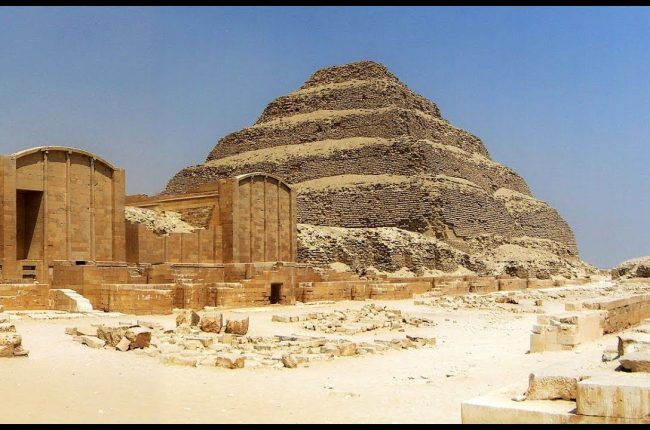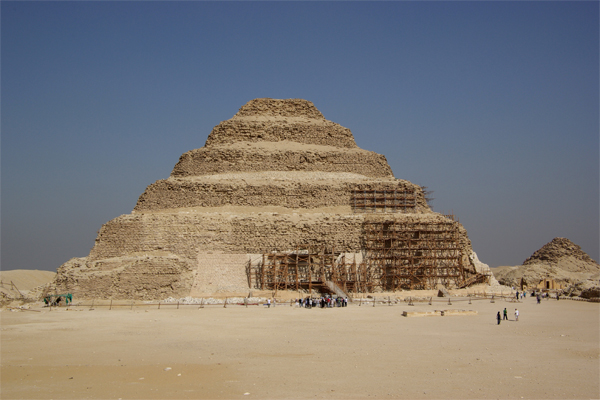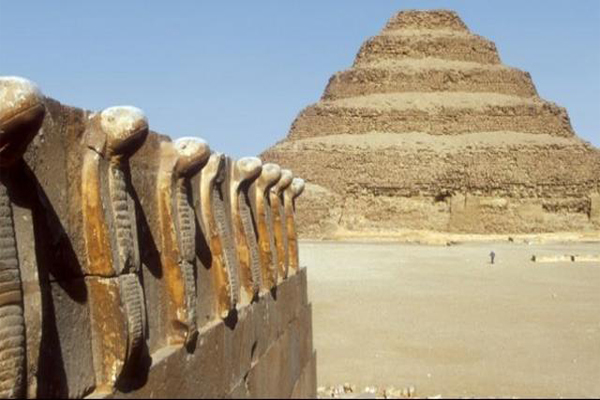Saqqarah Giza
Saqqara was the most important tomb of the ancient Egyptian city of Memphis and the site of the famous Step Pyramid of Djoser, the first in the world according to scholars, and also one of the oldest large stone structures. This is the most important point of interest to visit Saqqara, but there are also other small temples and pyramids located next to the tombs of prestigious names and pharaohs such as Mereruka, Kagemni, Ankhmahor, Idut and Ti.
From $1,250
Introduction:
The entire archaeological site of Saqqara covers an area of about 9 square kilometers and is located on the west bank of the Nile River, and is the largest necropolis of antiquity. It is a group of tombs belonging to the First Dynasty and will remain a tomb for the successive dynasties of the entire Old Empire until the Middle Empire decided to abandon it. Only with the new empire would Saqqara be used again as a necropolis for the royal tombs, and would be gradually abandoned and replaced by the Valley of the Kings.
It is a must-see site to understand a bit of the spirituality of ancient Egypt. They believed that their spirit, which they called KA, was a part of a whole, that it grew into all things, and that, from beyond, it returned to the earth as a river. A vision meant that every living being was part of a cycle in which the mind was constantly renewed, a cycle represented by the sun rising every morning in the east and going to bed every evening in the west (which is why the east is represented by the realm of the living and the west as the realm of the dead). The Nile River was the natural boundary of these two worlds and that is why the ancient Egyptians built their tombs on its banks. And Saqqara, of course, was no exception.
Points Of Interest In Saqqara
It was built by the famous Imhotep, who is considered the first known architect in history, during the rule of Pharaoh Djoser, belonging to the Third Dynasty, around 2630 BC. The Step Pyramid was built as the most important point in the funerary complex of the pharaoh. It is 140 meters long, 60 meters high and 118 meters wide. It was built of small blocks in a style similar to mud bricks and its importance lies in the fact that it was the inspiration for Pharaoh Khufu to decide to start building the pyramids of Giza
To the north of Saqqara are large groups of ancient tombs belonging to the First Dynasty and the Third Dynasty. There is also a Temple of Isis and a long alley lined with sphinxes separating the oldest tombs and other newer funerary complexes belonging to the Fifth Dynasty
On the south side of Saqqara lies the famous Step Pyramid of Djoser, as well as several distinguished funerary complexes: Menkaure, Sekmenket and Userkaf. In this area there are also tombs of many rulers and nobles of the Fifth Dynasty and the so-called New Kingdom Cemetery, which was built centuries later, during the Eighteenth Dynasty. Another point of interest south of Saqqara is the Serapeum, a temple dedicated to Apis, the god of Toro
In the southern area, where the neo-imperial tombs are located, there is a curiosity: the Monastery of St. Jeremiah. Much of the building, now in ruins, was commissioned in 470 and expanded during the sixth century. Attacked by the Arabs in the sixth century, it had to be rebuilt and since 960 it has been abandoned.
Although Napoleon had already studied Saqqara, with his arrival it acquired the importance it has today. The Napoleonic expedition landed in Alexandria in 1798, by which time the Step Pyramid of Djoser was hidden in sand and rubble. The first exploration for the study of the Pyramid of Djoser dates back to these years, by General Enrico Meno von Minotoli (1772-1846), head of the scientific expedition, sent by the Prussian government to Egypt in 1818.
He will be the first in a series of archaeologists and explorers who will become interested and obsessed with Saqqara, an inexhaustible source of Egyptian treasures: Italian Egyptologist Girolamo Segato (1792-1836), Colonel Richard W. Howard Vessey (1784-1853), archaeologist Carl Richard Lepsius ( 1810-1884) and the Frenchman Auguste-Edouard Mariette (1821-1881) who managed to expand the site of Saqqara to what we know today and to whom we owe the discovery of the Serapeum on November 12, 1851.
In Saqqara there are many sacred temples dedicated to the Gods: Anubion, to the jackal god Anubis, near the pyramid of Thetis. Serapeum, of the bull god Apis, north of Djoser's pyramid; Bapstion, an area dedicated to the goddess Bastet.
permanent Excavations: The site of Saqqara is very ancient and very vast, it is the subject of permanent excavations and every moment new tombs, temples and valuable objects are discovered that continue to write the history of Egypt for the first pharaohs.
position of the Fetus: In ancient tombs, the deceased was buried in a fetal position and wrapped in a reed mat. A lot has been excavated inside the mastabas, which are rectangular buildings with sloping walls and two parts: the chapel for the funerary cult and the crypt where the deceased is buried
Since 2006, this museum in Saqqara has been dedicated to the world's first architect. You can see the coffins and mummies found here, as well as many everyday objects from the ancient civilization. It was created by the French Egyptologist Jean-Philippe Lauer.
How to get to Saqqara::
Saqqara is located south of Cairo and 15 km south of the Giza cemetery, opposite the city of Memphis. If you are staying in the Egyptian capital, the best way to get there if you go on your own is by taxi or private car, at the price agreed upon in advance. But the best option is to hire a guided tour that includes transportation to and from your hotel.
Schedules:
8:00 am to 4:00 pm every day in the winter. And in the summer, the opening hours are extended to 17 hours.
Visit Prices:
Regular adult entry: 150 Egyptian pounds. Accredited students: 75 Egyptian pounds.
Although only the remains of this temple are preserved, a stroll through the surrounding area will take you back to Memphis' heyday.
In the end, if you want to know more about the history and culture of Egypt, the Memphis Museum is the place you cannot miss.
Statue of Ramesses II: The statue is 10 meters high and is well preserved despite its imperfection.
- Great Sphinx: This statue was built from a single piece of alabaster. It is 7 meters long and 4 meters high, and may have been carved in honor of the pharaoh Hatshepsut.
If you visit the Memphis Museum, you will find a variety of historical objects and relics to admire. This attractive open-air museum includes a covered hall and a large number of antiquities of great value, including pharaonic statues and columns.







No comment